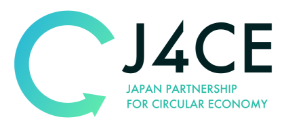Manufacture and sale of CfFA (Carbon-free Fly Ash): a concrete admixture that makes effective use of coal fly ash
[Company / organization] Nippon Paper Industries Co., Ltd.
Timing of launch
June 2016
Explanation of technology and business model
At the Ishinomaki Mill of Nippon Paper Industries Co., Ltd., the energy required for paper production is obtained from private power generation, and about 40,000 tons of coal ash is occured annually. Coal ash is difficult to use effectively due to its characteristics, and has been outsourced to cement companies. While on one hand, coal ash (fry ash) is known as a cement material that can impart characteristics of high durability and long life, but since it is a by-product of power generation, quality variation becomes a problem, and in Japan, effective use is not progressing.
In order to enable its effective use, we introduced a technology from Oita University to burn and remove unburned carbon contained in coal ash (fly ash), which was an obstacle to its use, and made the quality as uniform as possible. As a result, the concrete admixture fry ash as CfFA® (Carbon-free Fly Ash) is now on sale. This project will contribute not only to the creation of a sound material-cycle society, but also to reconstruction of the Great East Japan Earthquake and the improvement of the durability of concrete structures, thereby contributing to the countermeasures against the severe disasters that have occurred frequently in recent years.
<Technology key points>
Our manufacturing method for CfFA makes use of the fact that unburned carbon self-combusts at temperatures of 550°C or higher. Coal fly ash (the raw material for CfFA) is continuously fed into an external heating kiln to burn and remove unburned carbon. Uniform stirring is required at the same time as heating, and fine temperature control is also required, since CfFA loses its activity as a concrete material at temperatures of 950°C or higher.
Performance and targets, etc.
Achievements: CfFA has been used for public works projects such as bridges and tunnels in the Tohoku and Northern Kanto regions, and in private sector facilities
Targets: Shipment volume of 5,000t/year (current volume: 2,000t/)
URL
- Recycle
- Utilisation
- Construction
- Company in same business category
- Company in different category.
- Academic institute
- Currently under implementation (already in business)
- Case/initiative by individual company






